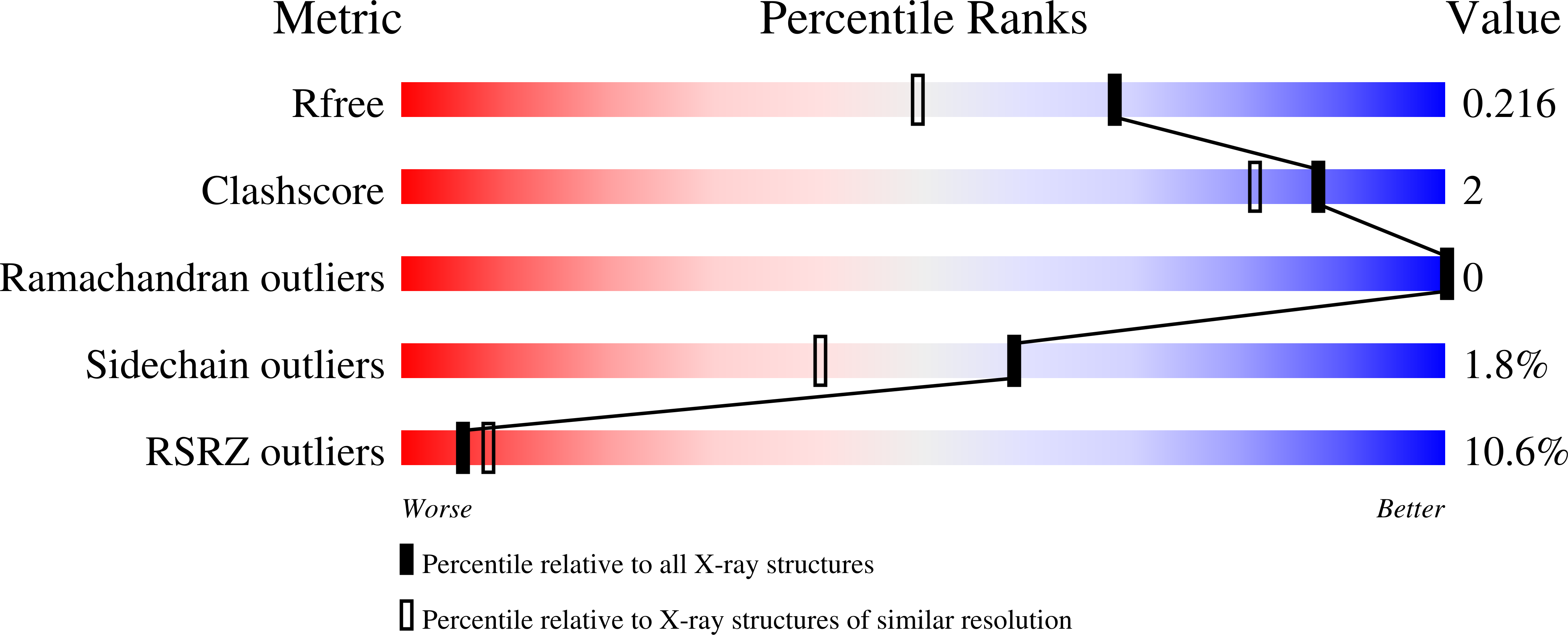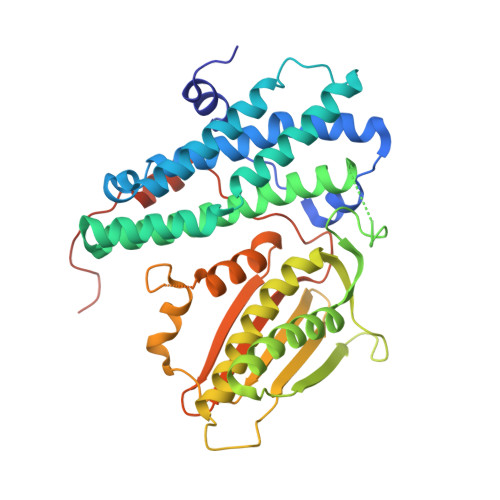Structure-guided Development of Specific Pyruvate Dehydrogenase Kinase Inhibitors Targeting the ATP-binding Pocket.
Tso, S.C., Qi, X., Gui, W.J., Wu, C.Y., Chuang, J.L., Wernstedt-Asterholm, I., Morlock, L.K., Owens, K.R., Scherer, P.E., Williams, N.S., Tambar, U.K., Wynn, R.M., Chuang, D.T.(2014) J Biol Chem 289: 4432-4443
- PubMed: 24356970
- DOI: https://doi.org/10.1074/jbc.M113.533885
- Primary Citation of Related Structures:
4MP2, 4MP7, 4MPC, 4MPE, 4MPN - PubMed Abstract:
Pyruvate dehydrogenase kinase isoforms (PDKs 1-4) negatively regulate activity of the mitochondrial pyruvate dehydrogenase complex by reversible phosphorylation. PDK isoforms are up-regulated in obesity, diabetes, heart failure, and cancer and are potential therapeutic targets for these important human diseases. Here, we employed a structure-guided design to convert a known Hsp90 inhibitor to a series of highly specific PDK inhibitors, based on structural conservation in the ATP-binding pocket. The key step involved the substitution of a carbonyl group in the parent compound with a sulfonyl in the PDK inhibitors. The final compound of this series, 2-[(2,4-dihydroxyphenyl)sulfonyl]isoindoline-4,6-diol, designated PS10, inhibits all four PDK isoforms with IC50 = 0.8 ¦̀M for PDK2. The administration of PS10 (70 mg/kg) to diet-induced obese mice significantly augments pyruvate dehydrogenase complex activity with reduced phosphorylation in different tissues. Prolonged PS10 treatments result in improved glucose tolerance and notably lessened hepatic steatosis in the mouse model. The results support the pharmacological approach of targeting PDK to control both glucose and fat levels in obesity and type 2 diabetes.
Organizational Affiliation:
From the Departments of Biochemistry and.
















